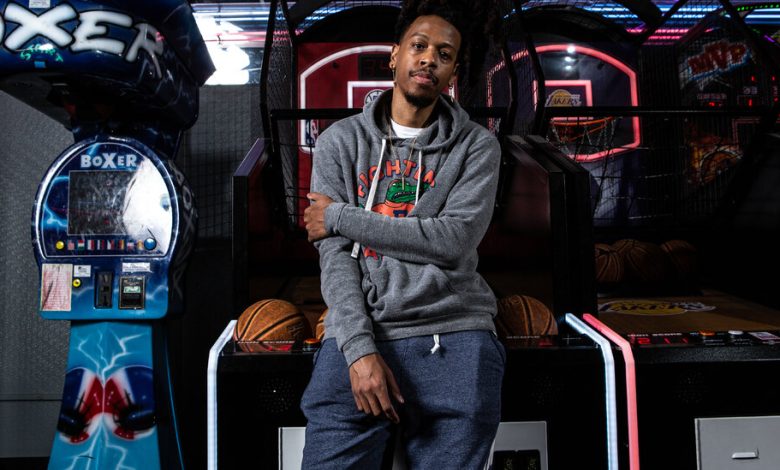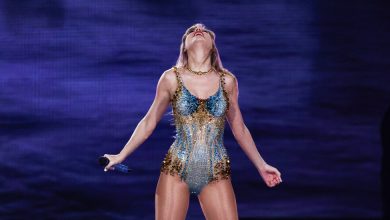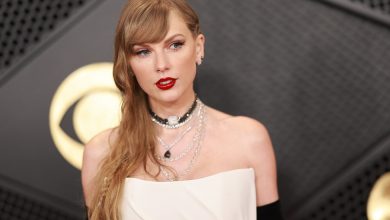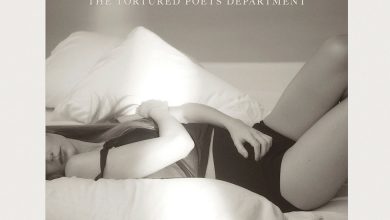The Personal Back Story Driving ‘They Cloned Tyrone’

Juel Taylor is a first-time feature film director, but he’s not new to Hollywood. With Tony Rettenmaier, his writing partner and former classmate in the University of Southern California graduate film school, Taylor helped write the sequels “Creed II” (2018) and “Space Jam: A New Legacy” (2021), establishing his credentials as an engineer of mainstream popcorn entertainment.
His first effort behind the camera, the comedy-sci-fi-conspiracy-thriller “They Cloned Tyrone” has a smaller profile but is in some ways even more ambitious. Starring John Boyega, Jamie Foxx and Teyonah Parris and streaming on Netflix, the original story — written by Taylor and Rettenmaier — wedges heady questions about structural racism, personal autonomy and the search for meaning into a pulpy package.
In the film, a diligent, small-time drug dealer named Fontaine (Boyega), who may or may not be a clone, teams up with his least favorite clients — Slick Charles (Foxx) and Yo-Yo (Pariss) — to unravel a sinister plot that upends everything he believes about himself and the world.
Taylor, 36, who grew up in Tuskegee, Ala., discussed the surprisingly personal origins of the story, playing with and against racial stereotypes and why he may owe his career to the Gnarls Barkley song “Crazy” in a pair of video interviews. These are edited excerpts from the conversation.
Where did “Tyrone” start for you?
Everything happened in kind of a weird little burst. In 2017 me and Tony were working with Macro [the company that produced “Tyrone”] on an episode of their show “Raising Dion.” Then in 2018 we got hired to work on “Creed II” and we pitched and sold this movie while we were working on that.
What was the original idea for the story?
It was a couple of things. I knew I wanted to do a mystery, like a bootleg Scooby-Doo where the detectives are inadequate but somehow uniquely equipped. And then there was a joke that I had with Tony: A pimp, a prostitute and a drug dealer walk into a bar. What if we made them the heroes?
But the actual story didn’t come until I figured out the character of Fontaine. In 2016, I reconnected with a friend from college. He had gotten arrested for something when we were 18 or 19 that ended up changing the course of his life. I had always been a little bit critical of him, because I thought he had so much potential, but in this conversation he revealed that he had been dealing with depression. He just didn’t know how to tell anybody back then. It completely changed my perspective. I started thinking a lot about blame and responsibility and that’s when all the elements of the movie came together. A guy is having an identity crisis and he has to overcome circumstances that are genuinely beyond his control.
Are you someone who thinks in genre, generally?
I do think in genre, but usually it’s mood and tone that comes to mind first. A lot of times it’s a song, or a piece of score and I’ll be trying to recapture how that feels. This movie was a lot of ’80s R&B and funk — Bootsy Collins, Mary Jane Girls, Patrice Rushen, Alicia Myers — and Southern rap, everything from Three 6 Mafia and Project Pat to UGK and Big K.R.I.T.
What about film influences?
Definitely “The Truman Show” and “They Live.” This movie is basically if “The Truman Show” and “They Live” had a baby. There’s a little bit of “The Matrix” in there, as well. A little “The Manchurian Candidate.” A little “Anaconda.” Tone-wise, we were really inspired by “Jackie Brown,” “Boogie Nights” and “The Big Lebowski.” And then for the world building we looked at “Napoleon Dynamite” and “It Follows.”
Did you always know you wanted to make movies?
I wanted to do video game design originally. I went to the University of Florida for undergrad and did this program called digital arts and sciences. But I quickly found out that I was not a great art student. The one project I did that was successful and that I actually had fun with was a music video I made inspired by Gnarls Barkley’s song “Crazy.” From there, I somehow got it into my head that I wanted to make films.
The movie takes place in a fictional Southern neighborhood called The Glen that seems a little bit stuck in time. How similar is it to where you grew up?
Very. A lot of places in the South don’t have the resources and infrastructure that they should, so even though the people might be making the most of it, there’s still this patina where everything feels like it’s from the ’80s. That’s something that was always in the forefront of our minds when we were designing The Glen.
What made you think of incorporating stereotypical ideas of Black culture in the conspiracy plot? It references everything from fried chicken, to grape drink, to perm cream.
We worked backward from the character of Fontaine. He’s in this situation through no fault of his own. Who put him there? And what else are they up to? I thought about all these conspiracies that I heard growing up and just tried to have fun with it and be a little churlish. It was a matter of walking a tightrope between these absurd plot points and some kind of darker and heavier undertones. I’m playing with the idea of how we see ourselves and how others see us; but, at the end of the day, I’m trying to make it entertaining.
Were you ever concerned about being perceived as promoting negative images of Black people? Or, on the other side, passing judgment on the culture you’re depicting?
I mean, that’s inescapable. Some of this stuff makes me uncomfortable, so I know some other people are going to be uncomfortable. We’ve had test screenings where people said, “I understand that it’s satire but I just don’t like seeing that.” And I think that’s totally fair. But you have to make peace with that if you’re even going to explore these subjects at all. The second you have anybody eating fried chicken onscreen, you are in somewhat of a danger zone. I legit know people who say, “I don’t eat chicken in front of white people.”
But I don’t know a way to explore this stuff without putting the images on the screen. Hopefully, this is a story and these are characters that people will want to engage with. And, if you do, you might see that some of these stereotypes are deconstructed and things are more than meets the eye. But if that’s not your experience, who am I to tell you you’re wrong? I don’t want people to think that there’s only one way for the movie to be interpreted.



